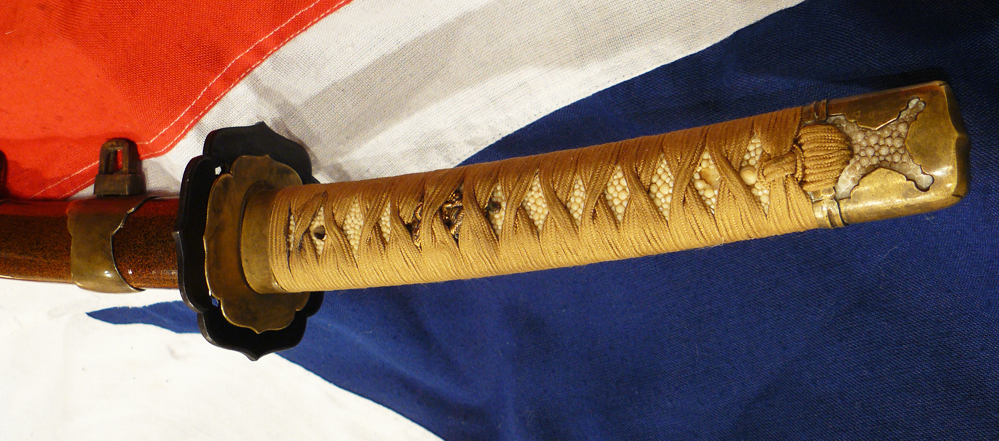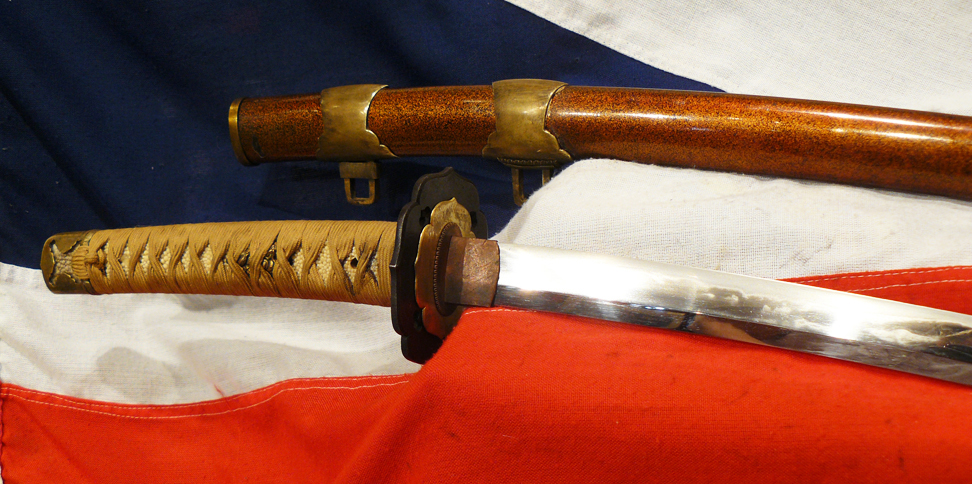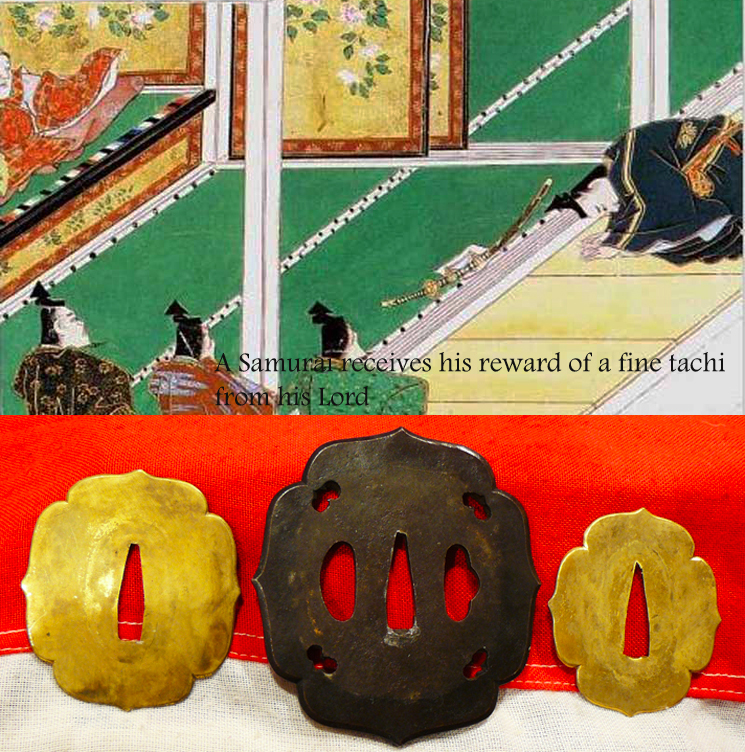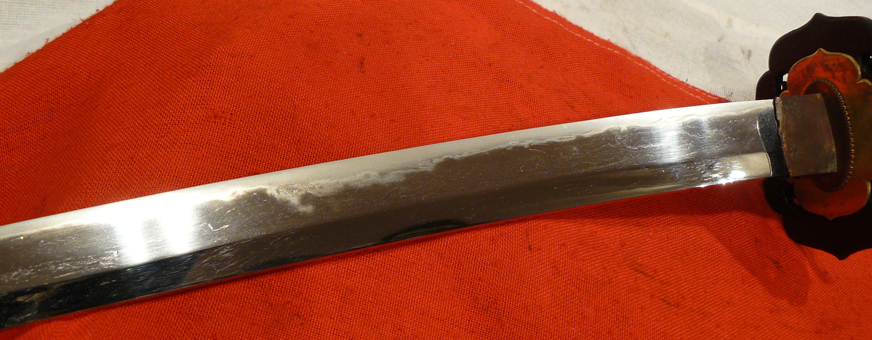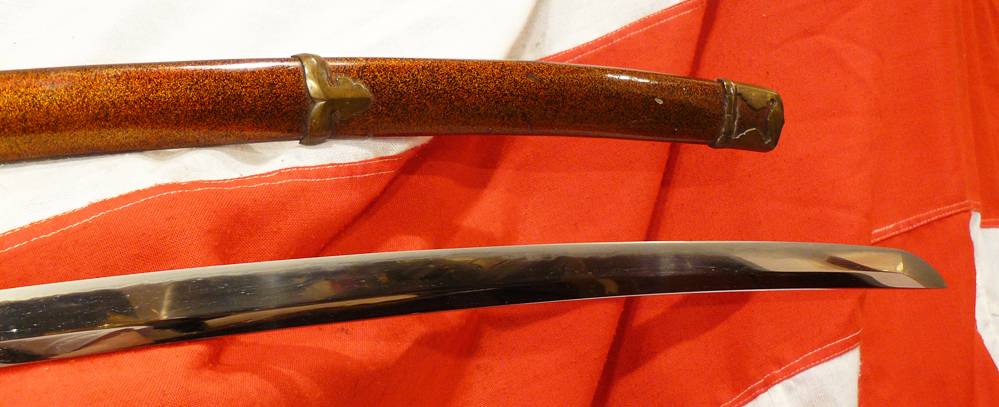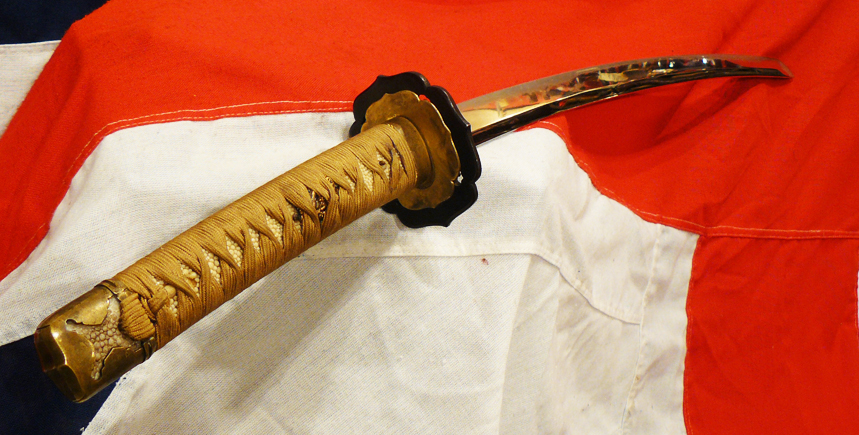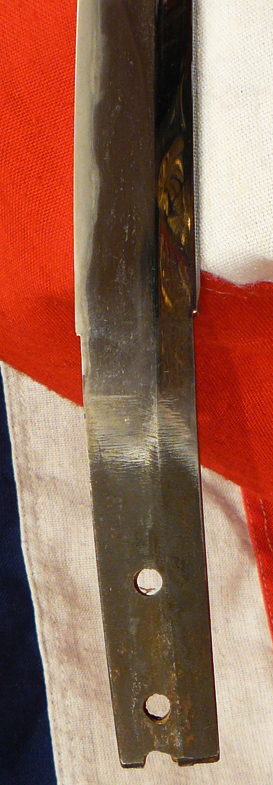A Delightful & Beautiful Most Ancient Samurai ‘Golden Dragon’ Tachi Around 600 Years Old
See it displayed on the tachi-kake, code 23511 an ancient tachi mounted in the Edo period on a theme of gold, gold nishiji lacquer saya, gold fittings and tsuba and pale gold tsuka-Ito bound of dragon menuki. Blade made In around 1390 to 1420, and this is a most beautiful and ancient sword from the great warring period of Japan's samurai history. In the gallery we show an early samurai print of the presentation of a similar fine tachi by a daimyo lord to his favoured samurai for illustration purposes. The mounts are original Edo period, with lovely nishiji ground gold lacquer on the saya and traditional tachi mountings in shinchu, and gold silk ito wrapped over pure gold overlaid, carved kinko dragon, holding the ancient ken, the straight ancient Buddhist samurai sword. The tsuba is a tradional tachi form in three pieces , dai seppa in shinchu and the central plate in iron. A blade of most impressive, elegant and deep curvature, typical of the early samurai sword of the Nambokochu to Muromachi era 1333 to 1573. As is often with ancient swords the story of it's use starts in the era before it was actually made, by it's master smith, maybe a decade earlier in the Nanboku-cho period (Northern and Southern Courts period) Spanning from 1336 to 1392, it was a period that occurred during the formative years of the Muromachi
bakufu of Japan's history.
The Imperial seats during the Nanboku-cho period were in relatively close proximity, but
geographically distinct. They were conventionally identified as:
Northern capital : Kyoto
Southern capital : Yoshino.
During this period, there existed a Northern Imperial Court, established by Ashikaga Takauji in Kyoto, and a Southern Imperial Court, established by Emperor Go-Daigo in Yoshino.
Ideologically, the two courts fought for fifty years, with the South giving up to the North in 1392.
However, in reality the Northern line was under the power of the Ashikaga shoguns and had little real independence. This sword would very likely have been used in the Onin War (1467-1477) which led to serious political fragmentation and obliteration of domains: a great struggle for land and power ensued among bushi chieftains and lasted until the mid-sixteenth century. Peasants rose against their landlords and samurai against their overlords, as central control virtually disappeared. An early Japanese print in the gallery shows a samurai receiving his reward of a fine tachi such as this one from his shugo daimyo lord. The shugo daimyo were the first group of men to hold the title "daimyo". They arose from among the shugo during the Muromachi period. The shugo daimyo held not only military and police powers, but also economic power within a province. They accumulated these powers throughout the first decades of the Muromachi period.
Major shugo daimyo came from the Shiba, Hatakeyama, and Hosokawa clans, as well as the tozama clans of Yamana, Ouchi, and Akamatsu. The greatest ruled multiple provinces.
The Ashikaga shogunate required the shugo daimyo to reside in Kyoto, so they appointed relatives or retainers, called shugodai, to represent them in their home provinces. Eventually some of these in turn came to reside in Kyoto, appointing deputies in the provinces.
The Onin War was a major uprising in which shugo daimyo fought each other. During this and other wars of the time, kuni ikki, or provincial uprisings, took place as locally powerful warriors sought independence from the shugo daimyo. The deputies of the shugo daimyo, living in the provinces, seized the opportunity to strengthen their position. At the end of the fifteenth century, those shugo daimyo who succeeded remained in power. Those who had failed to exert control over their deputies fell from power and were replaced by a new class, the "sengoku daimyo", who arose from the ranks of the shugodai'K and Ji-samurai. Osuriage tang unsigned, nishiji lacquer on the saya with small surface age chips, as to be expected. Blade 63cm long tsuba to tip. 40 inches long approx overall in saya
Code: 22660



